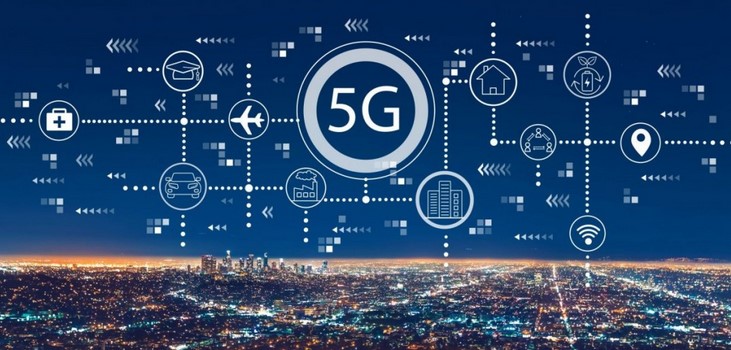There is more than just faster internet devices coming your way after the global rollout of the Latest Trends in 5G . It will change the way you consume media — video, gaming, smart devices, and on and on.
5G brings lower latency and improved capacity, allowing video calls to go smoothly, immersive virtual reality experiences to become a reality, and IoT to work more seamlessly in your life.
In this article, we are going to look at recent 5G trends and what they mean for you as a consumer.
Boosted Indoor And Outdoor Coverage/ Latest Trends in 5G
5G: The increasing focus on indoor and outdoor coverage. Despite all the various benefits such as more efficient spectrum use and roll-out convenience that exist with 5G, consistent indoor connectivity is a growing concern for consumers as remote work and always-on digital lifestyles become more ubiquitous. Overtime, early bcaks have showed mph indoor covering in view of the fact that are greater valuable than mph, to max, and battery existence for connection-free and immaculate connections for cloud gaming and augmentation, boondocks when big lumber mapping. This increasing requirement for enhanced indoor coverage is forcing telecoms to optimize network infrastructures.
The fact that 5G is able to provide a superior indoor coverage reduces reliance on Wi-Fi, and a number of users have expressed that their Wi-Fi usage has significantly reduced with the adoption of 5G.
If line 10100 tax return makes a difference between accurate and inaccurate income reporting, then comprehensive indoor coverage is a difference between constant access to essential online services and meaningful digital experiences. To live up to these expectations, providers are expanding network capacity and targeting a seamless transition to indoor scenarios.
Immediate Adoption of Immersive Experiences of Latest Trends in 5G
It is not really good news for consumers too as 5G is also changing the way consumers engage with the digital content, more specifically, immersive content such as the augmented and the VR. The transmission delay will slow down to sub 5–msec for 5G, which is beneficial for the time-sensitive applications and interactions. This upgrade is a godsend when it comes to low latency applications, such as gaming or remote teaming with multiple people.
This reduced latency and the opportunity for increased fidelity meant users were spending more time in immersive apps, but real-world simulations are a bridge to different types of interactive experiences. Take 5G cloud gaming for example, where wireless carriers stream high-quality games to your phone, eliminating the need for high-end home gear—blurring the line between console and mobile.
Network Slicing for Providing Customized Services
The most important feature of 5G is network slicing, which allows multiple virtual networks to be created above a mobile network infrastructure.
Each slice is created for particular needs, like better security or low latency, for the specialized applications that use them like autonomous vehicles or remote medical operations. This level of personalization means you may enjoy a bespoke process that meets certain objectives while not sacrificing quality or purpose.
So, basically, this means quicker, safer, efficient services tailor made for people. Operational efficiencies and improved data privacy for critical business processes can also be some use cases for enterprises leveraging private networks.
Growth of 5G Fixed Wireless Access (FWA)
Fixed Wireless Access (FWA) promises an attractive alternative to traditional broadband access over wires, and 5G technology is making it especially appealing to populations in countryside areas or underserved geographies. Using 5G in lieu of fiber-optic cables, which are expensive and hard to reach far-off places, this technology accomplishes quick internet delivery.
This provides consumers with more reliable and dependable internet connections to participate in essential online services like learning, telemedicine platforms, and e-commerce. FWA is accelerating digital convergence by bridging the urban-rural connectivity gap, enabling users in remote locations to experience urban-like levels of connectivity.
Increase in Cloud Gaming and Real Time Applications
5G has helped power cloud gaming and other real-time applications with the speed and low latency needed to make them viable for more gamers. For consumers, this means you can stream graphics-intense games directly from the cloud without needing to spend money on costly gaming consoles or top-end hardware.
The same benefits offered by 5G enhance experiences in non-gaming applications such as real-time collaborative workspaces, remote monitoring/virtual demonstration tools, and virtual events. You experience a seamless connection with fast data transfer: necessary for online gaming, smooth video conferences, and collaboration processes performed remotely. From play to work to interaction, the most recent developments are upending how YOU do these things on-line.
Final Thoughts
The importance of the 5G technology is more than just an internet speed change, and the developments will certainly continue. 5G will change the future of everyday life opening up new ways to connect and innovatively apply solutions across various sectors.
Consumers will benefit from more tailored and engaging services, improved access to key digital functionalities and the need to connect with people and the world around them, faster and more efficiently.
